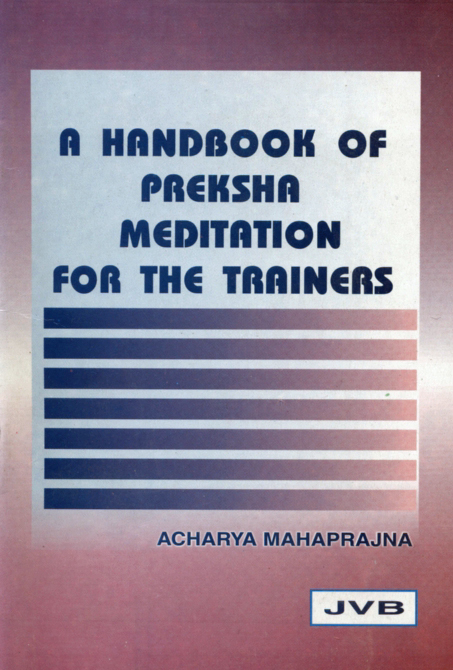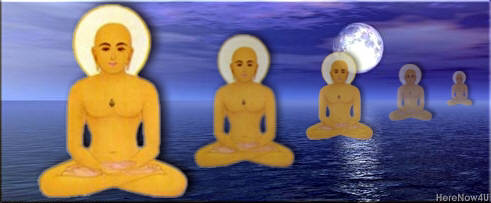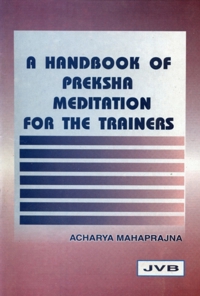
Editors note:
This Handbook of Preksha Meditation is a small guideline
showing examples of schedules from the system of
Preksha Meditation.
a)
Perceptive Preksha Meditation
(listen to your self)
A typical session sequence is described by the chapter [0][1][2][3][4]
Then following some possible variations in the 3rd step, chapter [3A][3B][3C]
b)
Contemplative Meditation
(talk to your self)
3 samples of Anupreksha Medition: Chapter [5][6][7]
c)
A special session on Kayotsarga: Total Relaxation With Self-Awareness [8]
and one for Fredom From Drug Addiction [9]
Pre Conditions

Posture:
You may select a posture of meditation in which you can sit comfortably and steadily for a long period.
The posture of meditation may be
- full lotus-posture
- half lotus-posture
- simple cross-legged posture
- diamond-posture (Vajrasan).
Mudras: Position of the Hands
There are two alternatives:
One position is called Jnana Mudra.
- Keep your right hand on the right knee and left hand on the left knee, keeping the palms turned up. Let the tip of the index finger touch the tip of the thumb with a slight pressure between them. Keep the other fingers straight.
The alternative position is called Brahma Mudra.
- Keep both the hands on your lap one above the other by keeping the palms upturned. Let the left palm remain under the right one.
Keep your eyes softly closed.
Recitation of Arham:
Start the meditation session with the repeated recitation of the mantra Arham.
- Exhale fully, then inhale completely. By slow exhalation begin the intonation of the mantra. Concentrating your mind on the navel, produce the sound "A" for about two seconds. While concentrating your mind on the Centre of Bliss, situated near the heart, produce the sound "Rha" for about four seconds. And lastly taking your mind upward from throat to the Centre of Knowledge, situated at the top of the head, produce the sound "mmm" for about six seconds.
- Inhale deeply again and repeat the same exercise 9 times.
Visualize that the sound waves are criss-crossing and weaving an oval-shaped web of armor all around you, protecting yourself from the evil effects of the external vibrations.
Recitation of the Mahaprana Dhvani:
Alternatively start meditation with the repeated recitation of the Mahaprana Dhvani.
- Exhale fully, then inhale deeply as long as you can. By slow exhalation, produce the sound "mmm" through the nostrils like buzzing of a bee, while concentrating your mind on the Centre of Knowledge situated on the top of the head and keeping the mouth closed.
- Inhale deeply again and repeat the same exercise 9 times.
The Aphorism of the Aim:
"Sampikkhae Appagamappaenam"
Perceive and realize the deepest and highest levels of your consciousness by your conscious mind.
See yourself through yourself.
For perception and realization of the self, practice preksha meditation.
Resolve for Meditation:
"I am practicing preksha meditation for the purification of my mind (psyche)".
(Repeat 3 times)

 Acharya Mahaprajna
Acharya Mahaprajna

